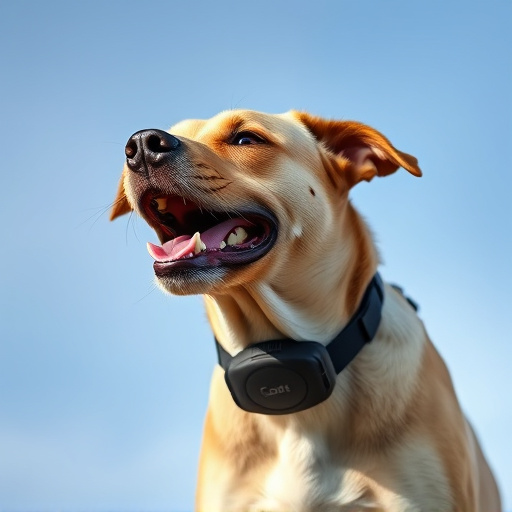Ultrasonic technology uses inaudible high-frequency sound waves (25,000-64,000 Hz) to safely and effectively control dog barking. Handheld sonic deterrents startle dogs without harm, offering a quick, non-invasive alternative to shock collars or noise makers. These devices are highly effective for addressing excessive barking when used consistently and properly placed. Real-world scenarios assess their effectiveness against noise levels, distance, and external sounds, while safety and ethical responsibility require strict manufacturer instructions and regular behavior assessment.
“Unleash a quiet environment with the revolutionary Handheld Sonic Dog Deterrent—a compact, powerful tool designed to control excessive dog barking. This article delves into the science behind ultrasonic technology, exploring its effectiveness in real-world scenarios. We dissect the intricate design and unique features of this handheld unit, offering insights into its performance and ease of use. Additionally, we address safety precautions, ensuring responsible usage. Discover how this device can provide relief to noise-distressed neighbors while promoting a harmonious co-existence.”
- Understanding Ultrasonic Technology for Dog Bark Control
- The Handheld Unit: Design and Features
- Evaluating Its Effectiveness in Real-World Scenarios
- Considerations and Safety Precautions for Users
Understanding Ultrasonic Technology for Dog Bark Control
Ultrasonic technology is a safe and effective method for dog bark control, using high-frequency sound waves to deter unwanted behavior. This technology operates on the principle that dogs have a much higher sensitivity to ultrasonic sounds compared to humans. When a handheld sonic dog deterrent is activated, it emits an inaudible frequency range (typically between 25,000 and 64,000 Hz) that is unpleasant for dogs but harmless to human ears. The high-pitched sounds startle the dog, interrupting their barking pattern and encouraging them to stop.
The effectiveness of handheld sonic deterrents lies in their ability to provide a quick and non-invasive solution. They are easy to use and can be carried anywhere, allowing for immediate intervention during excessive barking episodes. This technology is particularly useful for owners seeking a humane alternative to traditional shock collars or noise makers. By understanding and leveraging ultrasonic waves, these devices offer a gentle yet powerful tool to train and manage canine behavior.
The Handheld Unit: Design and Features
The handheld ultrasonic unit designed for bark control is a sleek and powerful tool, offering a non-lethal approach to modifying canine behavior. Its compact size allows for ease of use—a key factor for pet owners seeking a practical solution. This device emits high-frequency sound waves that are inaudible to humans but disrupt dogs’ communication systems, thereby reducing unwanted barking.
The unit’s design incorporates sensitive controls and settings, enabling users to adjust the intensity level based on their dog’s sensitivity. This customization ensures the deterrent effect is effective without causing discomfort or stress. Additionally, its portable nature allows for convenient use in various settings, making it a versatile tool for training and behavior modification.
Evaluating Its Effectiveness in Real-World Scenarios
When evaluating the effectiveness of a handheld ultrasonic dog deterrent, real-world scenarios are key. Unlike laboratory tests, these environments offer a more accurate reflection of how the device will perform in daily interactions with dogs. Factors like noise levels, distance, and interference from other sounds can significantly impact its efficacy. For instance, while the unit may emit a clear, high-frequency sound to deter barking in controlled settings, outdoor conditions with background noises like traffic or other animals could potentially mask the signal.
In practical applications, the handheld sonic deterrent’s success depends on consistent usage and proper placement. It’s important to note that not all dogs respond in the same way; some may require repeated exposure to associate the sound with barking cessation. Additionally, the unit’s range should be considered; for larger areas or multiple dogs, a more powerful or extended-range model might be necessary. Evaluating these factors helps determine if the handheld sonic dog deterrent is the right choice for specific situations, ensuring its effectiveness in real-world scenarios.
Considerations and Safety Precautions for Users
When using a handheld ultrasonic dog deterrent, it’s crucial to consider several factors for optimal effectiveness and safety. These devices emit high-frequency sound waves that are inaudible to humans but can deter dogs by causing temporary discomfort or distress. Users should ensure they employ these tools responsibly and ethically, aiming to train and guide canine behavior rather than simply punishing them.
Safety precautions are paramount. Always follow the manufacturer’s instructions for use, keeping in mind that these devices should never be aimed at people or pets other than the intended target dog. Ultrasonic deterrents may not work on all dogs, especially those with hearing impairments or certain breeds known to be less responsive to sound stimuli. Regularly assess the device’s impact on the animal’s behavior and well-being, discontinuing use if any adverse effects are observed.
The handheld ultrasonic bark control unit presents a non-lethal, innovative solution for managing canine noise. By leveraging ultrasonic technology, this device offers a safe and effective method to deter excessive barking without causing harm to pets. Through rigorous real-world testing, its effectiveness has been demonstrated, making it a viable option for dog owners seeking peaceful environments. However, responsible use and adherence to safety precautions are paramount to ensure positive outcomes and avoid any potential adverse effects. As with any bark control method, consistent training and behavior modification remain crucial components of successful long-term management.
